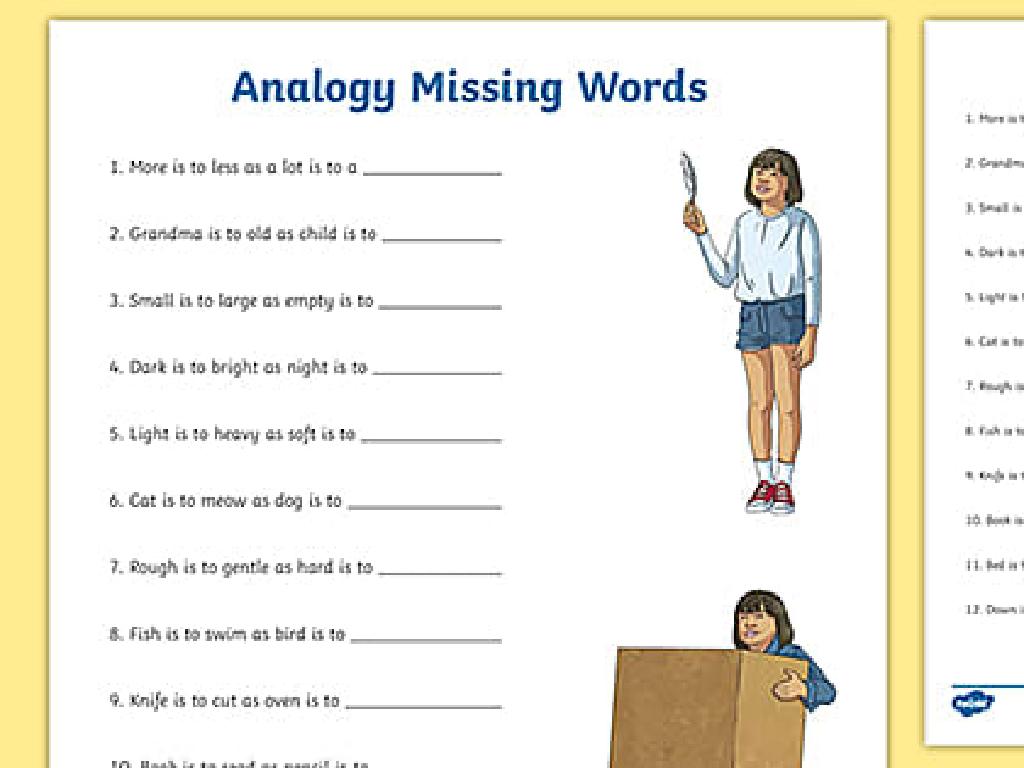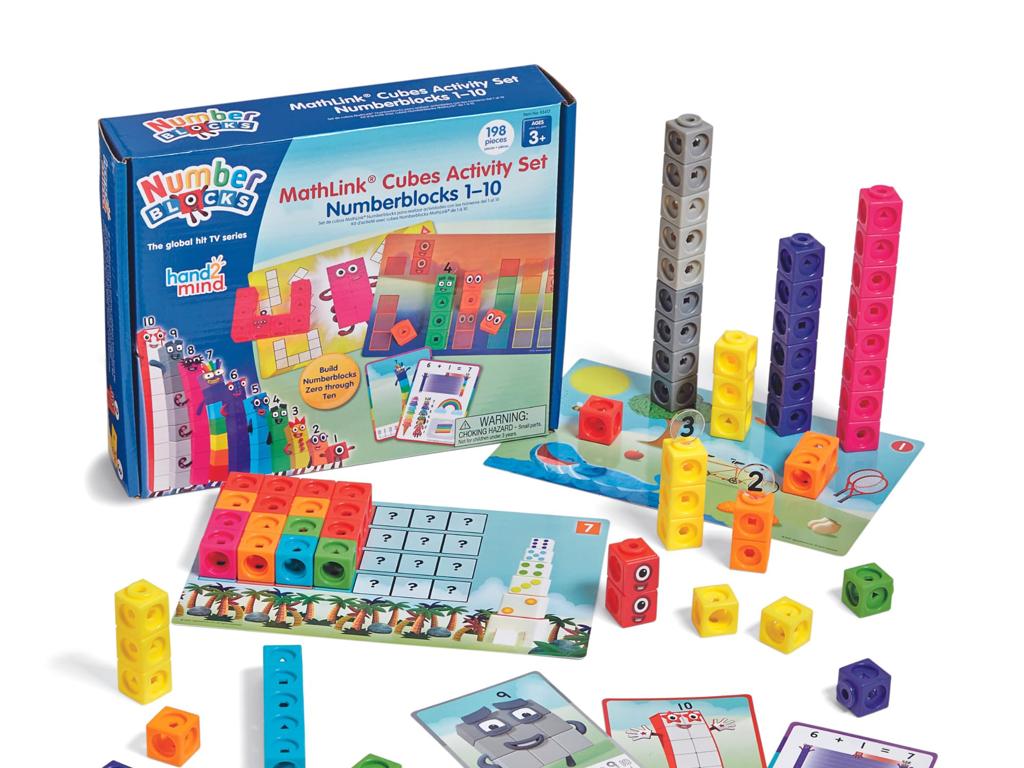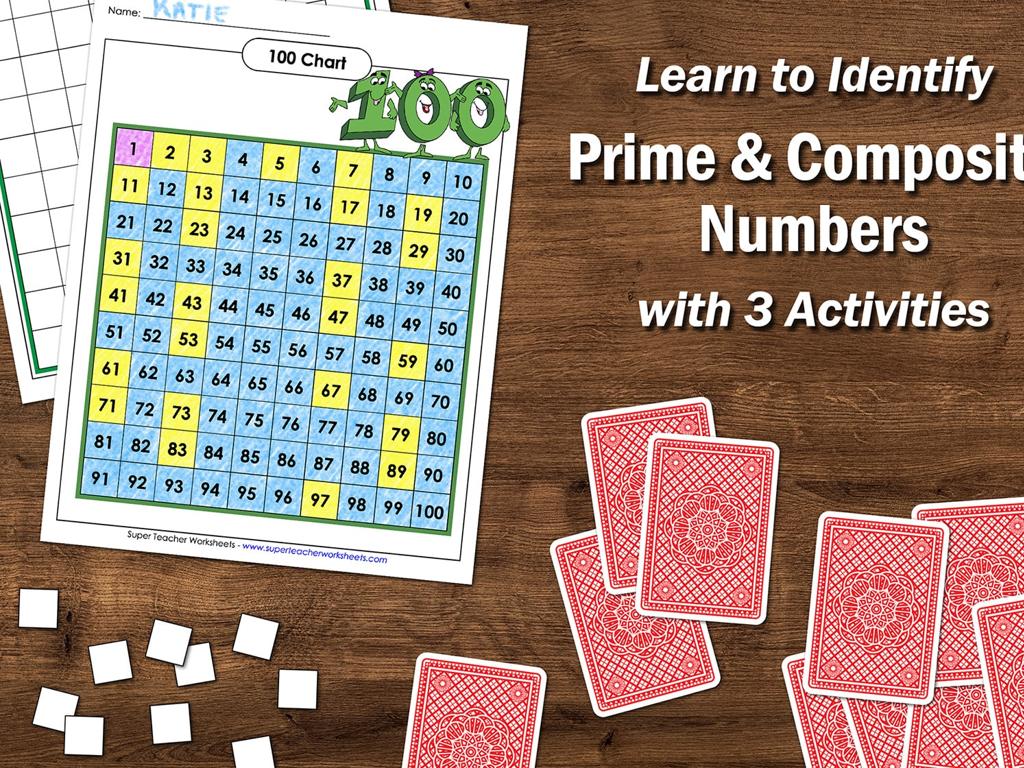Count Scattered Pictures - Up To 5
Subject: Math
Grade: Kindergarten
Topic: Counting To 5
Summary: Introduce kindergarteners to counting up to 5 through fun, interactive activities using scattered pictures, classroom hunts, and group games. This hands-on math lesson features counting with familiar items like toys and fruits, promoting one-to-one correspondence and number recognition. Students will practice touching each object as they count, building foundational number sense. Engaging games and a counting party make learning joyful while reinforcing real-world counting skills.
Please LOG IN to download the presentation. Access is available to registered users only.
View More Content
Welcome to Counting!
– Greet our little mathematicians
– Today’s goal: Learn to count
– Counting tells us ‘how many?’
– Practice counting with fun pictures
– We’ll count items like toys and fruits up to 5
|
This slide is designed to introduce kindergarten students to the concept of counting in a fun and engaging way. Start the lesson with a warm greeting to make the children feel excited about learning math. Explain that the goal for today is to learn how to count, which is a fundamental skill in mathematics. Emphasize that counting is used to determine the quantity of items, answering the question ‘how many?’. To make the learning process interactive, use pictures of familiar items such as toys, fruits, or animals and encourage the students to count along with you up to the number 5. This will help them grasp the concept of counting in a concrete way. The activity should be hands-on, allowing the children to physically point to or touch each item as they count. This tactile approach reinforces learning and makes the experience memorable.
Learning to Count Up to 5
– What is counting?
– Counting means knowing numbers in the right order.
– Counting things we see
– Like counting toys, snacks, or pictures.
– Counting together: 1 to 5
– We’ll count aloud as a group, starting at 1 and ending at 5.
– Practice makes perfect
|
This slide introduces the concept of counting to kindergarten students. Begin by explaining that counting is the ability to recite numbers in the correct order. Use familiar objects like toys or snacks to illustrate counting in a tangible way. Engage the class by counting together from 1 to 5, encouraging them to join in and practice. Reinforce the idea that counting is a skill that gets better with practice. Prepare to have visual aids like pictures or actual items to count in class, and consider interactive counting activities where students can participate and demonstrate their understanding.
Counting with Pictures
– Count objects in any order
– Point as you count each picture
– Use your finger to touch each picture as you count
– Practice counting together
– We’ll count pictures as a group activity
– Counting is fun and easy
|
This slide introduces the concept of counting objects that are scattered, not just in a line. It’s important to emphasize to the students that the arrangement of objects doesn’t affect the count. Encourage them to point to each picture as they count to keep track. During the group activity, use various pictures scattered across the page and count them together with the class. This will help students understand that each object counts as one, regardless of its position. Make the activity interactive and enjoyable to reinforce the learning experience. You can use stickers, toys, or illustrations as counting objects to engage the children.
Let’s Practice Counting: Counting Scattered Pictures
– Count pictures aloud together
– Point to each picture as you count
– Touching each picture helps not to miss any
– Ensure each picture is counted once
– Determine total number in each set
– After counting, say ‘There are ___ pictures’
|
This slide is designed to engage Kindergarten students in a counting activity. The teacher will display sets of scattered pictures, up to 5, and guide the students to count them aloud. It’s crucial to teach the children to point at each picture as they count to avoid counting the same picture twice. After counting the pictures in each set, the students will state the total number of pictures. The teacher should encourage the students to practice counting in a fun and interactive way, possibly using real objects or illustrations. The goal is to reinforce the concept of one-to-one correspondence in counting and to build confidence in their counting skills.
Counting Game: Find and Count!
– Let’s play a counting game
– Find items in our classroom
– Count each item, up to 5
– Use your fingers to keep track
– Can you find 5 different things?
– Maybe 5 blocks, pencils, or books!
|
This interactive game is designed to help students practice counting to 5 in a fun and engaging way. Encourage the children to look around the classroom and find various items they can count. They should try to count up to 5 items, such as blocks, pencils, or books. Remind them to use their fingers to keep track of the count. As a teacher, you can prepare different stations with items arranged in groups of up to 5 to facilitate the game. Possible activities include counting colored blocks, stickers, or shapes. Ensure that each child gets a turn and praise their efforts to build confidence in their counting skills.
Counting Party: Let’s Count to 5!
– Welcome to our Counting Party
– Count toys, stickers, and blocks
– Find groups of items to count
– Each friend takes a turn
– Practice counting up to 5
– Use your fingers to help count
|
This slide introduces a fun class activity designed to help Kindergarten students practice counting up to 5. Set up stations with different sets of toys, stickers, and blocks, ensuring that no group has more than 5 items. Encourage each child to count the items at their station aloud, using their fingers if necessary, to reinforce the concept of counting. Rotate the students through the stations to give them a variety of counting experiences. Possible activities include counting colorful blocks, sorting and counting stickers, and grouping toys to count. The goal is to make counting tangible and interactive, fostering a hands-on learning environment.
Review and Goodbye: Counting Up to 5
– Celebrate our counting today
– Counting is fun and useful
– Counting helps in daily activities like sharing toys
– Say bye to the numbers
– Look forward to more counting
– We’ll count even higher next time!
|
This slide is meant to wrap up the lesson on counting with enthusiasm and a positive outlook towards mathematics. Reinforce the idea that counting is not only fun but also a practical skill that they will use in their daily lives, such as when sharing snacks or toys with friends. Encourage the children to wave goodbye to the numbers as a playful way to end the lesson, which also helps them remember the numbers they’ve learned. Finally, build anticipation for the next lesson by hinting that they’ll learn to count even higher, fostering a sense of excitement and progress.





